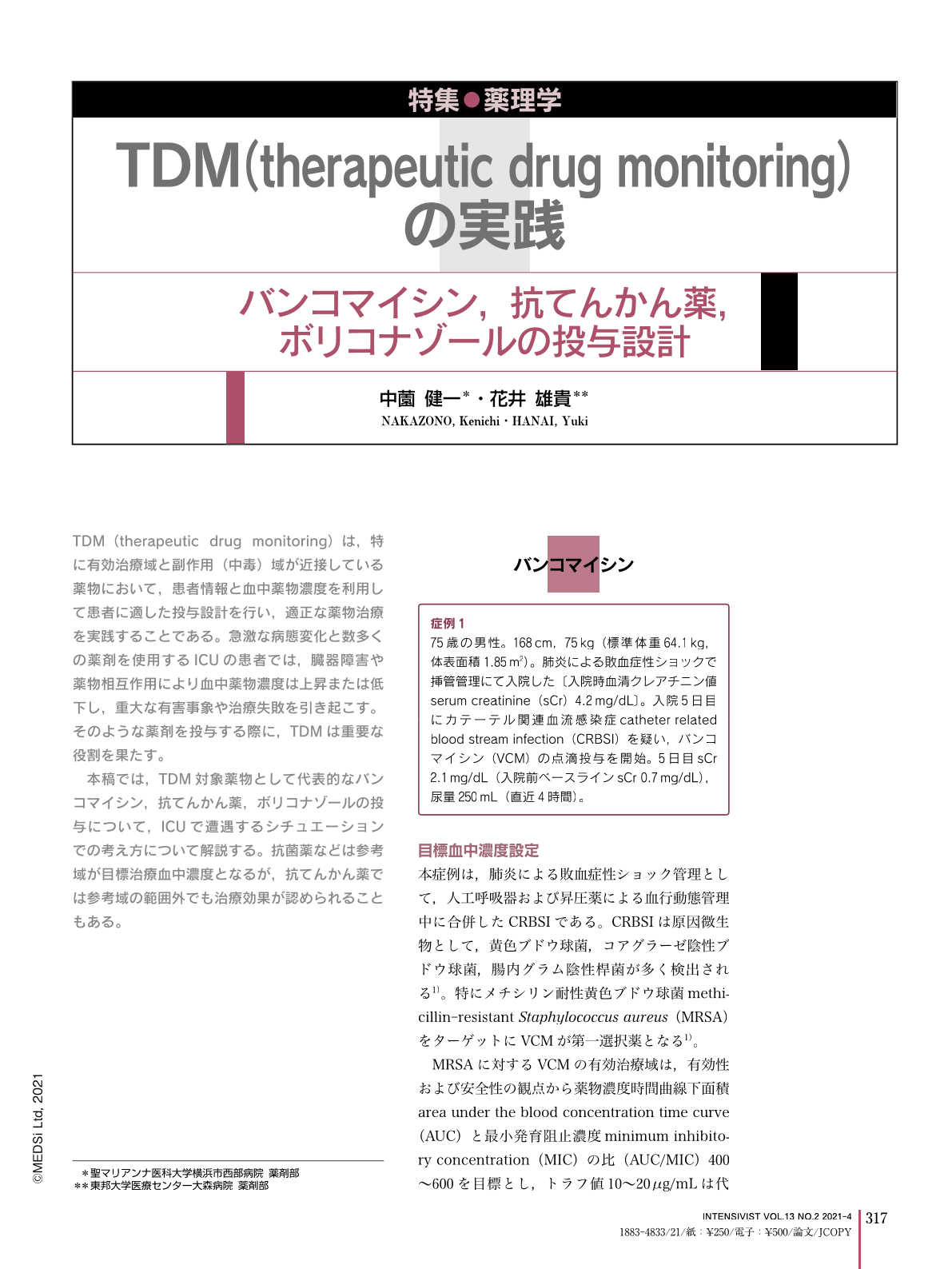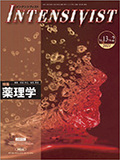Japanese
English
- 有料閲覧
- Abstract 文献概要
- 1ページ目 Look Inside
- 参考文献 Reference
TDM(therapeutic drug monitoring)は,特に有効治療域と副作用(中毒)域が近接している薬物において,患者情報と血中薬物濃度を利用して患者に適した投与設計を行い,適正な薬物治療を実践することである。急激な病態変化と数多くの薬剤を使用するICUの患者では,臓器障害や薬物相互作用により血中薬物濃度は上昇または低下し,重大な有害事象や治療失敗を引き起こす。そのような薬剤を投与する際に,TDMは重要な役割を果たす。
本稿では,TDM対象薬物として代表的なバンコマイシン,抗てんかん薬,ボリコナゾールの投与について,ICUで遭遇するシチュエーションでの考え方について解説する。抗菌薬などは参考域が目標治療血中濃度となるが,抗てんかん薬では参考域の範囲外でも治療効果が認められることもある。
Therapeutic drug monitoring (TDM) uses patient information and drug concentrations to design an appropriate dosage regimen for each patient, especially for medications with a narrow therapeutic window. In the intensive care unit, where drastic pathological changes and multiple medications are used, blood drug concentrations may increase/decrease due to organ damage and drug-drug interactions, leading to serious adverse events and treatment failure. TDM plays an important role in the administration of such drugs. In this article, we will discuss the administration of vancomycin, antiepileptic drugs, and voriconazole, which are typical drugs for TDM, and explain the concept in situations encountered in the ICU. For antibacterial drugs, the reference range is the target therapeutic concentration, but for antiepileptic drugs, therapeutic effects may be observed even outside the reference range.

Copyright © 2021, MEDICAL SCIENCES INTERNATIONAL, LTD. All rights reserved.


